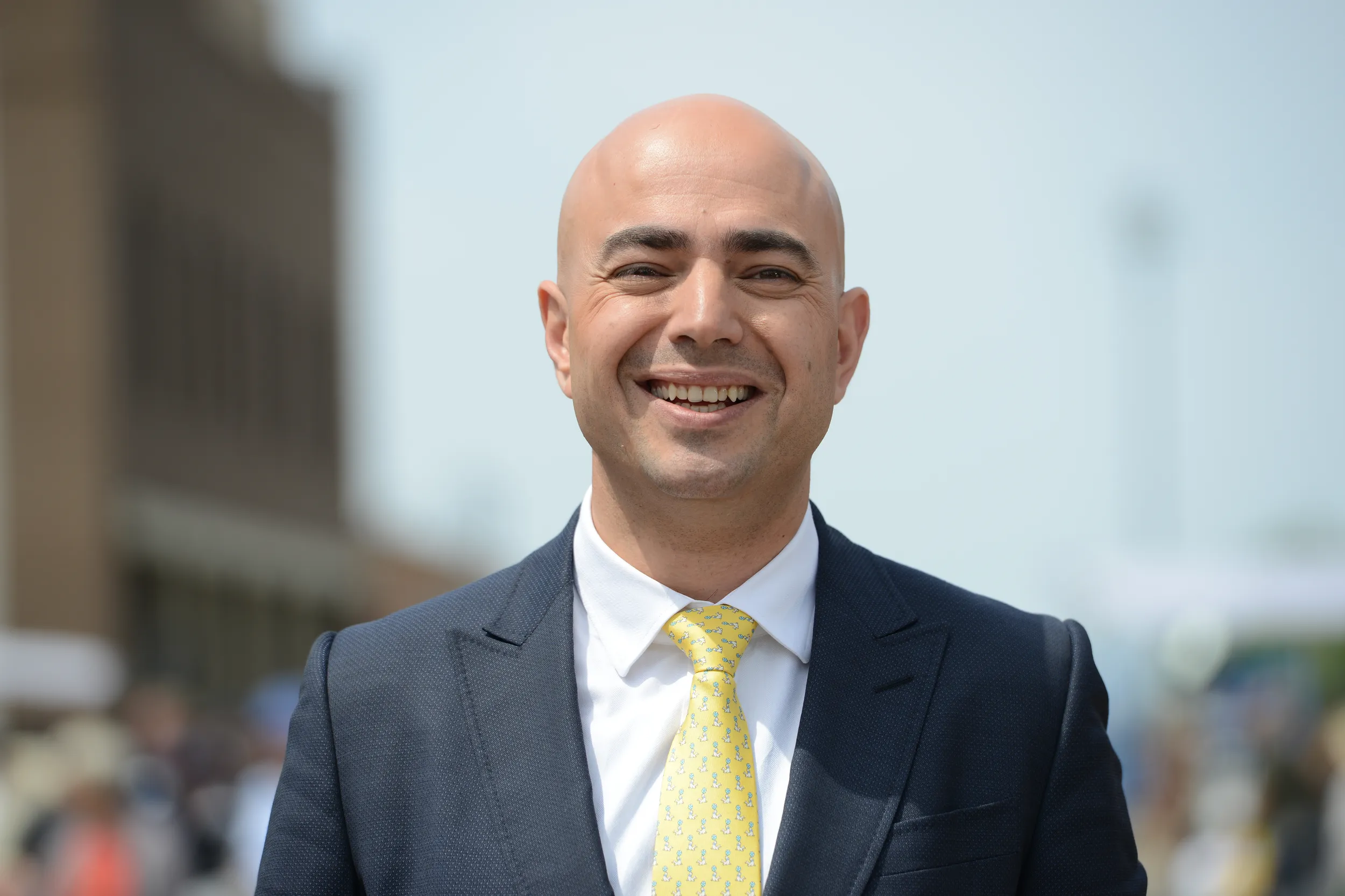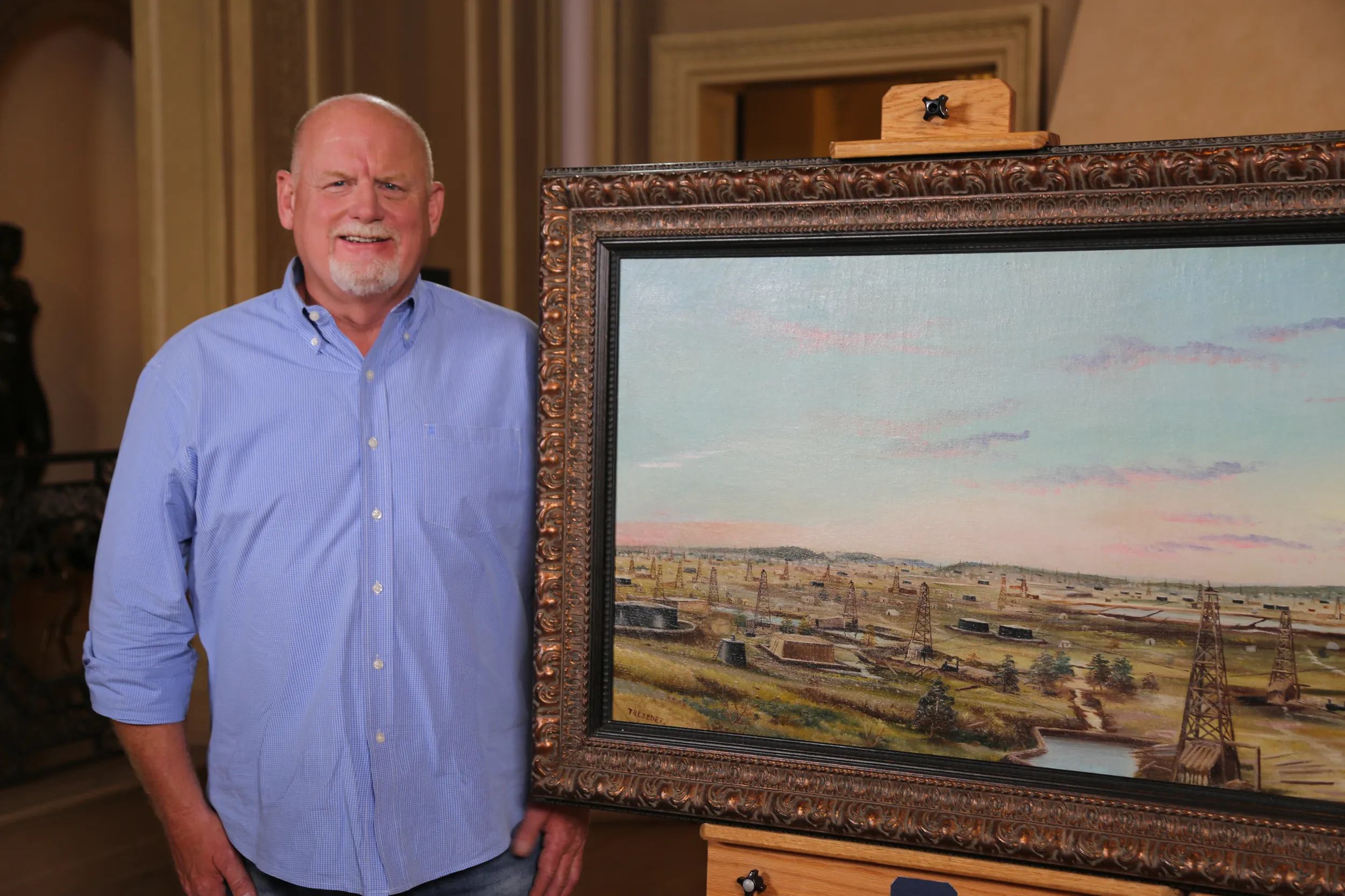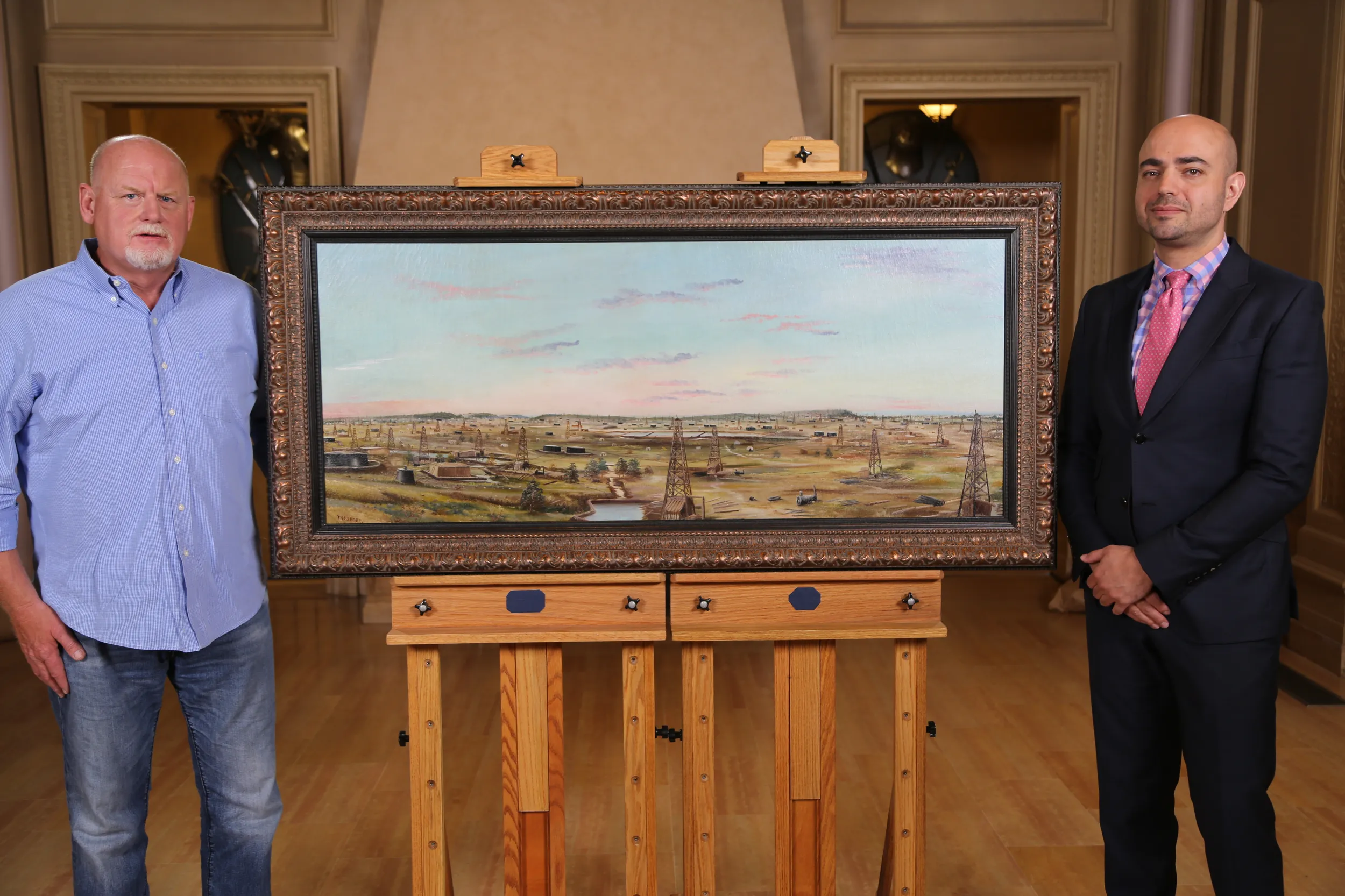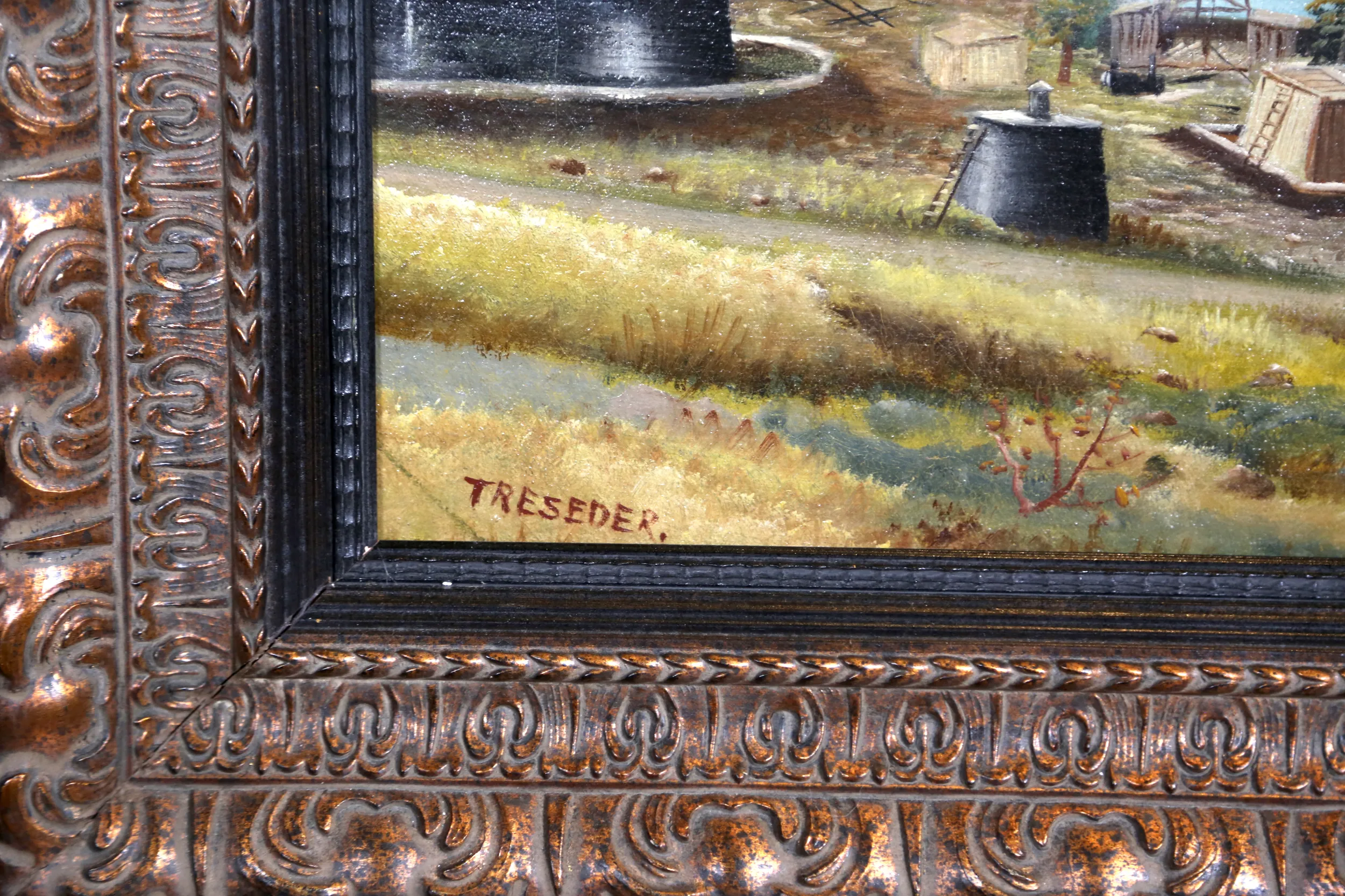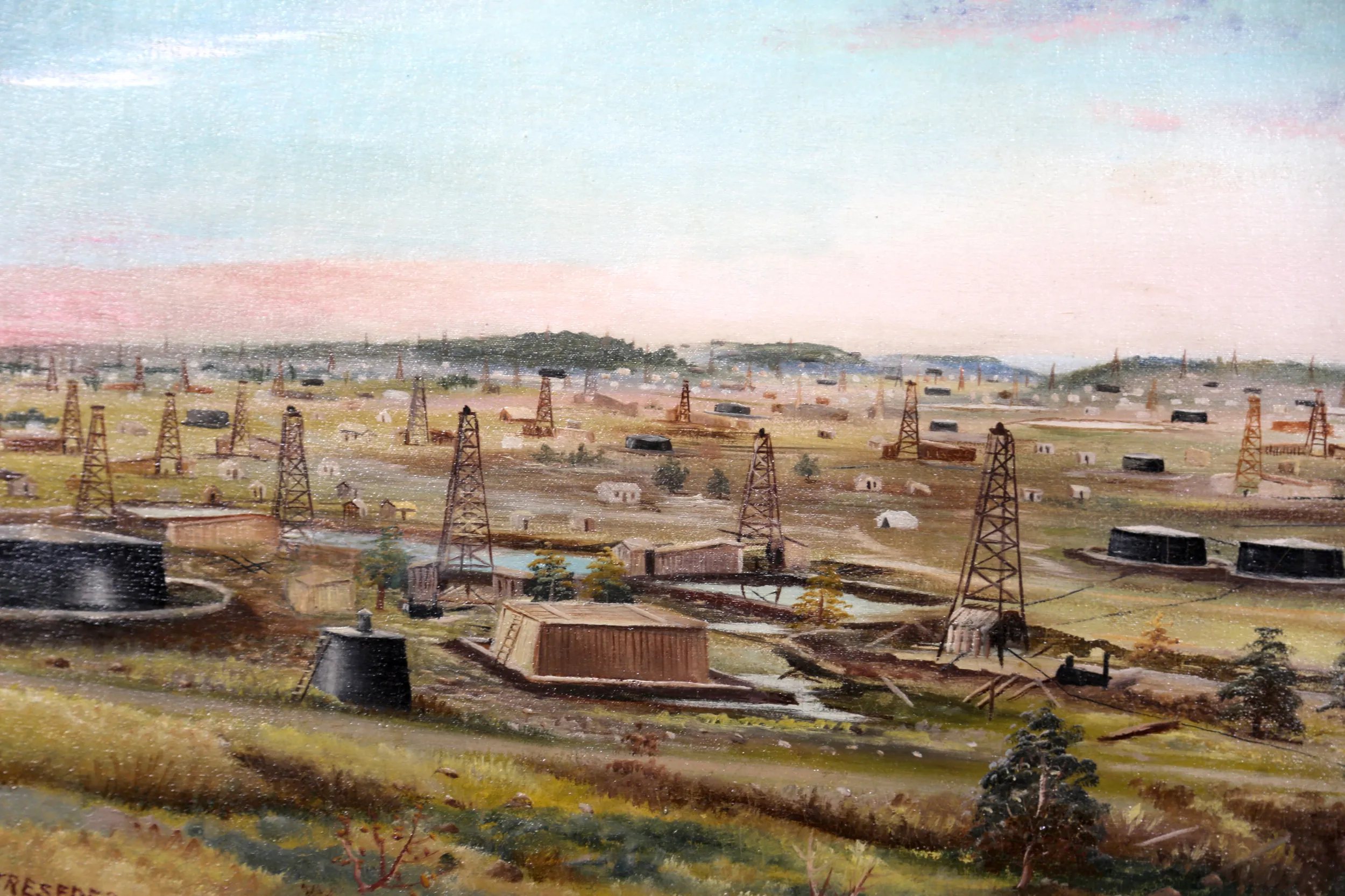GUEST: I brought a oil painting, I believe, of Glenpool, Oklahoma, in approximately 1909, when the oil boom was going on in Glenpool and kind of helped create Tulsa to be what it is today. And we believe that this painting was done by a man named Frank Treseder. We believe that he was on his way to Dallas to see his daughter. He stopped through Glenpool, and Robert Galbraith may have possibly had commissioned him to do this painting. When I was just a little boy in, like, third or fourth grade, I'd go to the bank with my father, and this man that had this painting was my dad's banker. And then, he was my banker in... later in life. And when he got sick, I went and done some work on his house for him. When I went in to get paid, he had this sitting on the floor in front of his fireplace. And I said, "I remember that!" And he goes, "I know. You always loved that." And so, he said, "This is what I'm paying you with." And I was like, "I don't need a painting. (laughing) I need dollars, you know!" And, anyway, he said that he thought that this was worth considerable more than what he owed me for the work, that he wanted me to have this because I'd always loved it. And so, I took it, and I took it to Salt Lake City, Utah, and then on to Ogden, Utah. Had the museum of art up there take a look at it, and they authenticated it for me.
APPRAISER: It's Frank McKay Treseder. Now, he was born in Liverpool and came over to America on the ship "Chimborazo." This was one of the famous ships that carried a lot of Mormon immigrants destined for Salt Lake City. The artist lived from 1853 to 1923. He's an early Mormon artist. So, we're looking at a painting of the oil boom in... in its infancy. Now, in Oklahoma, that started in 1905 right around Glenpool. This could be Glenpool, and Glenpool is the place where oil was found near Tulsa. So, it's the city that made Tulsa, in a way.
GUEST: Right.
APPRAISER: But it's not signed anywhere "Glenpool," so we can't prove it. And there are a lot of things that... here that are a little bit speculative, but what we do know is that this painting is of an oil field, that it is by Frank Treseder. And we also know that his paintings are held in some museums. He's... he's a little known artist, but we do have some information about him, mostly from genealogical records and some criminal records. He was convicted a couple times in Ogden, Utah-- I think, the first time on burglary charges and then on bribery charges to get out of polygamy charges.
GUEST: Right.
APPRAISER: So, it's very possible he became an itinerant painter after that and would have come through Tulsa when oil was found here. The painting is oil on canvas. While it's not dated, I would guess earlier in the history of the oil boom is when the painting would be dated-- approximately 1907, 1909, some time around then. Have you ever had the painting appraised?
GUEST: No, I have not. I had it cleaned and she had a friend of hers look at it. But they indicated that I would need to get a value on it from some place. Like you said, this is from Tulsa. This is from Glenpool. A local appraiser would be better, and I just never had time to...
APPRAISER: Right.
GUEST: ...to get it done.
APPRAISER: There are certain things that make this painting valuable, and they might be different from what you're thinking about. One of the things that makes it valuable is that it is of oil fields. Now, there are not that many early oil field paintings, and you can imagine that the collector base probably has some money to spend on... on paintings of early oil fields. Another thing that makes this painting valuable is its sheer size and beauty as a early American typographical landscape of a... of a place before it was developed. And the third and probably even most important thing is that this is a Utah artist. Amongst the Mormon artists, the ones who have genealogical records, they are highly collectible. They are often times sold on... in private deals to a firm and very wealthy and established collector base of Mormon artists. All of this together makes this painting especially valuable. Now, there are no comparables at auction of his works because he's very rare. My conservative auction estimate on this painting would be $15,000 to $20,000.
GUEST: Really? That is... that's awesome. I wouldn't in... I didn't know, like I said, I-I didn't... I-I didn't know whether it was worth the $350 to have it cleaned or not.
